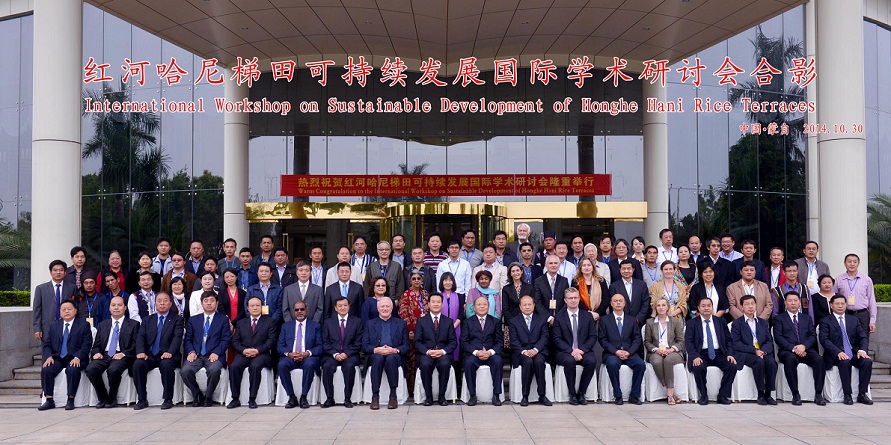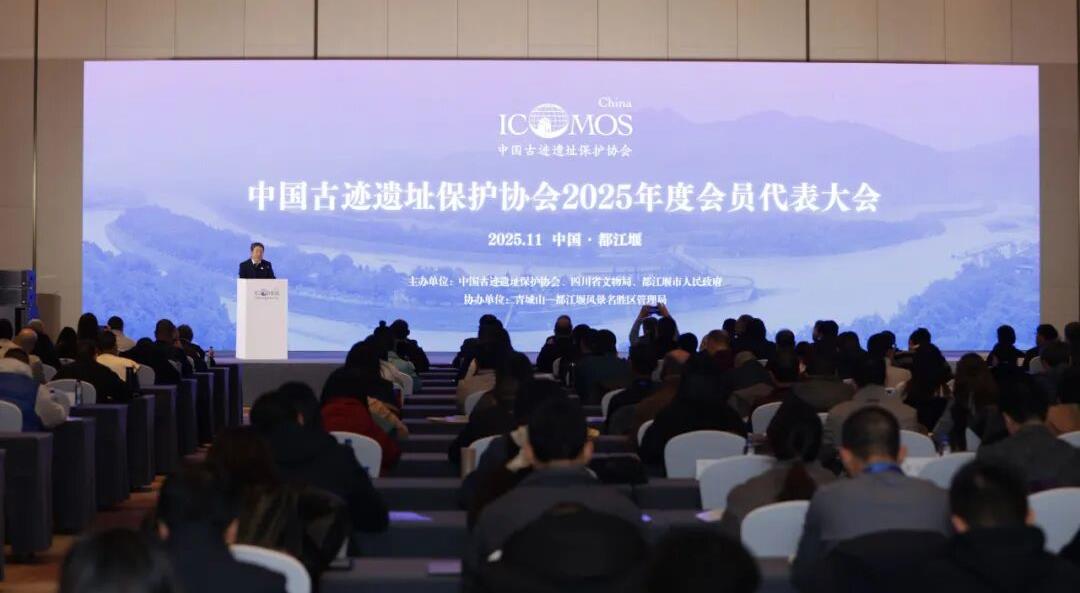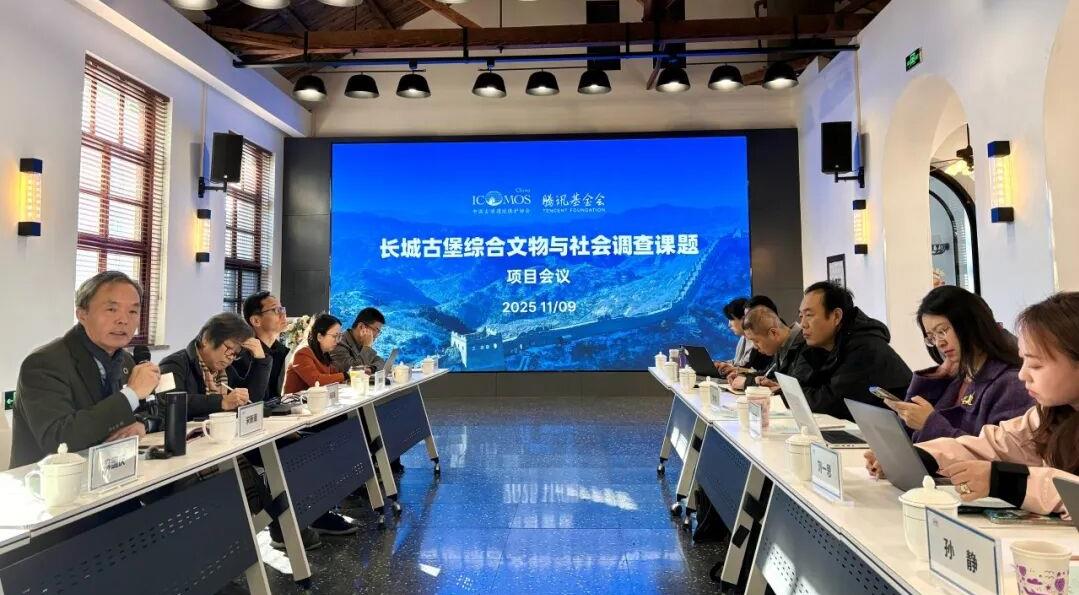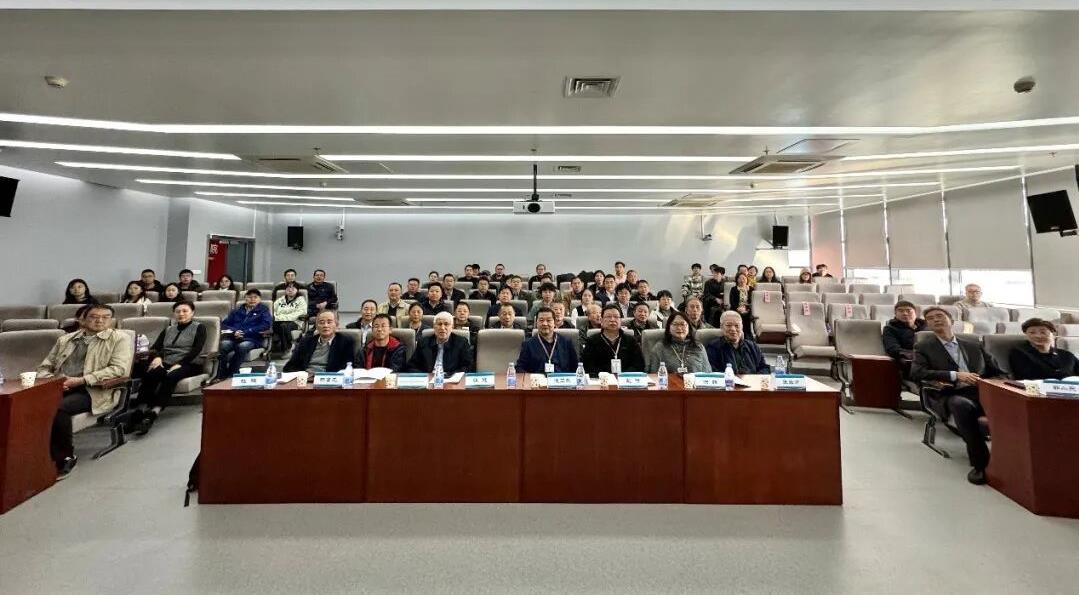红河哈尼梯田文化景观可持续发展国际学术研讨会召开
由国家文物局和云南省政府主办,云南省文化厅、红河哈尼族彝族自治州人民政府承办、中国古迹遗址保护协会承办的“红河哈尼梯田文化景观可持续发展国际学术研讨会”于2014年10月30日在云南蒙自召开。文化部副部长、国家文物局局长励小捷、云南省副省长高树勋、红河州州长杨福生、联合国教科文组织代表汉斯以及联合国教科文组织前助理总干事班德林到会致辞。来自国际古迹遗址理事会、国际文物保护与修复研究中心、文化景观、历史村镇国际、和传统建筑国际科学委员会、联合国二类培训中心的代表,以及德国、挪威、西班牙、南非、日本、韩国、菲律宾、泰国、越南、马来西亚、中国的近百名代表参加会议。会议于10月31日结束,并通过了《梯田景观可持续发展的红河倡议》。
红和哈尼梯田文化景观世界遗产于2013年联合国教科文组织世界遗产委员会第37届会议上列入《世界遗产名录》。此次会议是根据会议决议召开,旨在研讨梯田文化景观的可持续发展,与亚洲类似遗产地共享保护和管理经验。会前代表们参观了红河哈尼梯田文化景观,与遗产地管理者和当地居民进行了交流。

以下为红河倡议书中英文原文:
关于梯田文化景观可持续发展的
红河倡议
我们,来自联合国教科文组织、国际古迹遗址理事会、国际文物保护与修复研究中心和遗产地社区的代表,以及来自相关国际专业机构和亚洲各有关国家的专家,
回顾联合国教科文组织第37届世界遗产委员会会议有关决议(Decision: 37 COM 8B.24):“考虑组织一次梯田景观管理国际研讨会,以便将红河哈尼梯田可持续管理方面所做的工作,分享给亚洲其他面临类似挑战的遗产地”;
感谢中国国家文物局和云南省人民政府主办本次国际研讨会,感谢中国古迹遗址保护协会、云南省文化厅、红河哈尼族彝族自治州人民政府和元阳县人民政府为会议圆满举办付出的努力,以及哈尼族人民的热情款待和他们对这一处独特文化景观和世代家园的守护。
经过现场考察和学术研讨,我们认为:
梯田文化景观是一类特殊的农业生态系统,实现了人类与自然之间的微妙平衡。
梯田文化景观是在认识人类与特定环境之间相互关系的基础上,通过千百年来对农耕实践的不断摸索和完善所创造出来的产物。
这种农耕实践,包括对物种、耕作方式和自然环境的保护,并通过知识体系、民间信仰和风俗习惯得以固定,成为世代相传的文化传统。
梯田文化景观反映出人类顺应自然、利用自然、与自然和谐相处的智慧,体现了人类创造力、耐受力和意志力,对当今保护文化和自然的多样性以及人类的可持续发展有着重要的示范作用。
梯田文化景观的保护,不仅要保护其物质形态,更要保护支撑其物质形态的传统知识体系。
我们认识到,梯田文化景观保护面临着环境威胁,以及在全球一体化背景下的社会文化和经济挑战,包括:
现代农业生产工具和技术以及高产作物的引入,可降低劳动强度,但同时可能对土地的可持续利用与生态系统的维系构成威胁;
生活方式的改变,可能使年轻人逐渐流向城市,由此造成农业劳动力资源匮乏,并导致知识体系、民间信仰和风俗习惯改变,对文化认同带来冲击;
失控的旅游业和无序的基础设施建设,可能对当地生态系统带来压力,并对传统文化造成负面影响。
为保证梯田文化景观的可持续发展和当地独特文化传统的延续和传承,我们倡议:
1. 坚持“以人为本”的全面、可持续发展观。尊重当地居民渴望发展、享受幸福生活的权利,完善基础设施,提高教育和医疗水平,改善生活条件;尊重并保障当地居民参与决策的权利,支持他们在梯田文化景观可持续发展中发挥主要作用。
2. 保护并发展传统特色农业经济,提高当地居民的生活水平。鼓励居民创建符合自身利益的经济模式,推动农产品销售,增加农产品附加值,提高当地居民收益,吸引年轻劳动力回流从事农业生产。
3. 尊重知识体系、民间信仰和风俗习惯。建立非物质遗产传承机制,加强和引导社区文化活动,维护当地传统,珍视社区认同,延续文化生态。
4. 保护自然和人文环境。加强可持续生态旅游管理,科学评估游客承载力,制定旅游设施标准,促进旅游收益回馈梯田文化景观保护并惠及当地民众。
5. 加强能力建设。开展遗产保护、监测、管理、研究、展示、宣传、教育等方面的学术交流和人员培训。
6. 鼓励亚洲国家之间的交流与合作。共享遗产保护和管理经验,共同应对挑战,实现梯田文化景观的可持续保护、管理与发展。
红河哈尼梯田可持续发展国际学术研讨会全体代表
2014年10月31日 中国 云南 红河
Honghe Recommendations on the Sustainable Development of
Terraced Cultural landscapes
We, the representatives from UNESCO, ICOMOS, ICCROM, local communities, and experts from other international organizations concerned, as well as from related countries of Asia:
Recalling the Decision by the UNESCO World Heritage Committee at its 37th session (Decision 37 COM 8B.24) that “consideration is given to arranging an international workshop on the management of extensive terraced landscapes so that the work done on putting in place sustainable management of the Hani Honghe terraces might be shared with other properties in Asia that face similar challenges”;
Expressing our appreciation to the State Administration of Cultural Heritage of the People’s Republic of China and the People’s Government of Yunnan Province for hosting this workshop, and to ICOMOS China, Yunnan Provincial Bureau of Cultural Heritage, Honghe Hani and Yi People’s Autonomous Prefecture and Yuanyang County Government, for all their contributions to the success of this event, and to the Hani people for their warm hospitality and for their custodianship of the unique cultural landscape that is their home;
Based on the site visit and workshop discussion:
Considering
That the terraced cultural landscape is a special type of agricultural ecosystem that maintains the delicate balance between man and nature.
That the terraced cultural landscape is the result of particular local farming methods and associated practices derived through centuries of selection and refinement based on people’s relationship with the unique natural environment.
That these farming and associated practices, including the protection of crop species, cultivation methods and the natural environment, have been cast into knowledge systems, folk beliefs and customs and passed down from one generation to another as cultural traditions.
Recognizing that the terraced cultural landscape embodies the human response in adapting to, utilizing and maintaining a harmonious co-existence with nature; and that it reflects the creativity, endurance and willpower of human-kind, which sets a profound exemplar for today’s protection of both the cultural and natural diversities and sustainable development.
Affirming that protecting the terraced cultural landscape means not only retaining its physical form, but also safeguarding the traditional knowledge systems that underpin its structure.
Acknowledging that the protection of terraced cultural landscapes is faced with environmental threats, and in the context of globalization, socio-cultural and economic challenges such as:
The introduction of modern tools and technology for agricultural production and the use of high- yield crop varieties can substantially reduce labour intensity but may at the same time threaten a sustainable way of land use and the maintenance of the ecosystem;
Changes in lifestyle may lead to the exodus of young people to the urban areas with the subsequent loss of labour to the farmland, which may subsequently impact on cultural identity with a change to knowledge systems, folk beliefs and customs;
Uncontrolled tourism and unregulated infrastructural development may put pressure onto local ecosystems and adversely affect traditional culture.
For the sustainable development of terraced cultural landscapes and continuation of the unique local cultural traditions;
We recommend that:
1. People-oriented inclusive sustainable development should be pursued by respecting the right of local people for development and the leading of a dignified life, with their living conditions effectively improved through the upgrading of infrastructure and the level of education and health care; by respecting the local communities’ right of involvement in decision-making processes, and by supporting their leading role in the sustainable development of terraced cultural landscapes;
2. The traditional agricultural economy with its local characteristics should be protected and developed to improve the life of the local population. The income of local farmers should be increased by encouraging the establishment of commercial systems in the interest of local populations, by facilitating the sales and by enhancing the added value of their agricultural products, as well as attracting young people to return to their farm land;
3. Knowledge systems, folk beliefs and customs should be respected. Mechanisms for passing on intangible heritage should be established to enhance and guide local communities’ cultural activities, safeguard local traditions, value community identity and sustain cultural ecology;
4. Natural and cultural environments should be protected by sustainable eco-tourism management, based on, amongst others, a carrying capacity study, the criteria for the introduction of tourist facilities, and the feeding back of revenue generated from tourism both into the conservation of the landscape and to the local population;
5. Capacity building at all levels should be strengthened through academic exchange, as well as the training of staff, on conservation, monitoring, management, research, presentation publicity and education;
6. Exchanges and cooperation amongst Asian countries should be encouraged in order to share expertise, to address challenges with concerted efforts, and to achieve sustainable conservation, management and development of terraced cultural landscapes.
Issued by all the participants of the International Workshop on the Sustainable Development of the Honghe Hani Rice Terraces, in Honghe, Yuannan, China, on October 31, 2014
附件下载:
最新新闻
-
-

- 2025-11-28 协会动态
中国古迹遗址保护协会2025年度会员代表大会在四川都江堰召开
2025年11月28日,中国古迹遗址保护协会(ICOMOS China)2025年度会员代表大会在四川都江堰召开。
-
-
-

- 2025-11-12 协会动态
【创意交流】长城古堡综合文物与社会调查课题项目会议在京召开
-
-
-

- 2025-11-04 专委会动态
第四届文化遗产防灾减灾年度论坛暨2025年中国古迹遗址保护协会文化遗产防灾减灾专业委员会年会在北京召开
聚焦“充分认识自然灾害风险,提升文化遗产安全韧性”, 中国古迹遗址保护协会文化遗产防灾减灾专业委员会2025年年会于11月1日在北京市成功举办。
-






